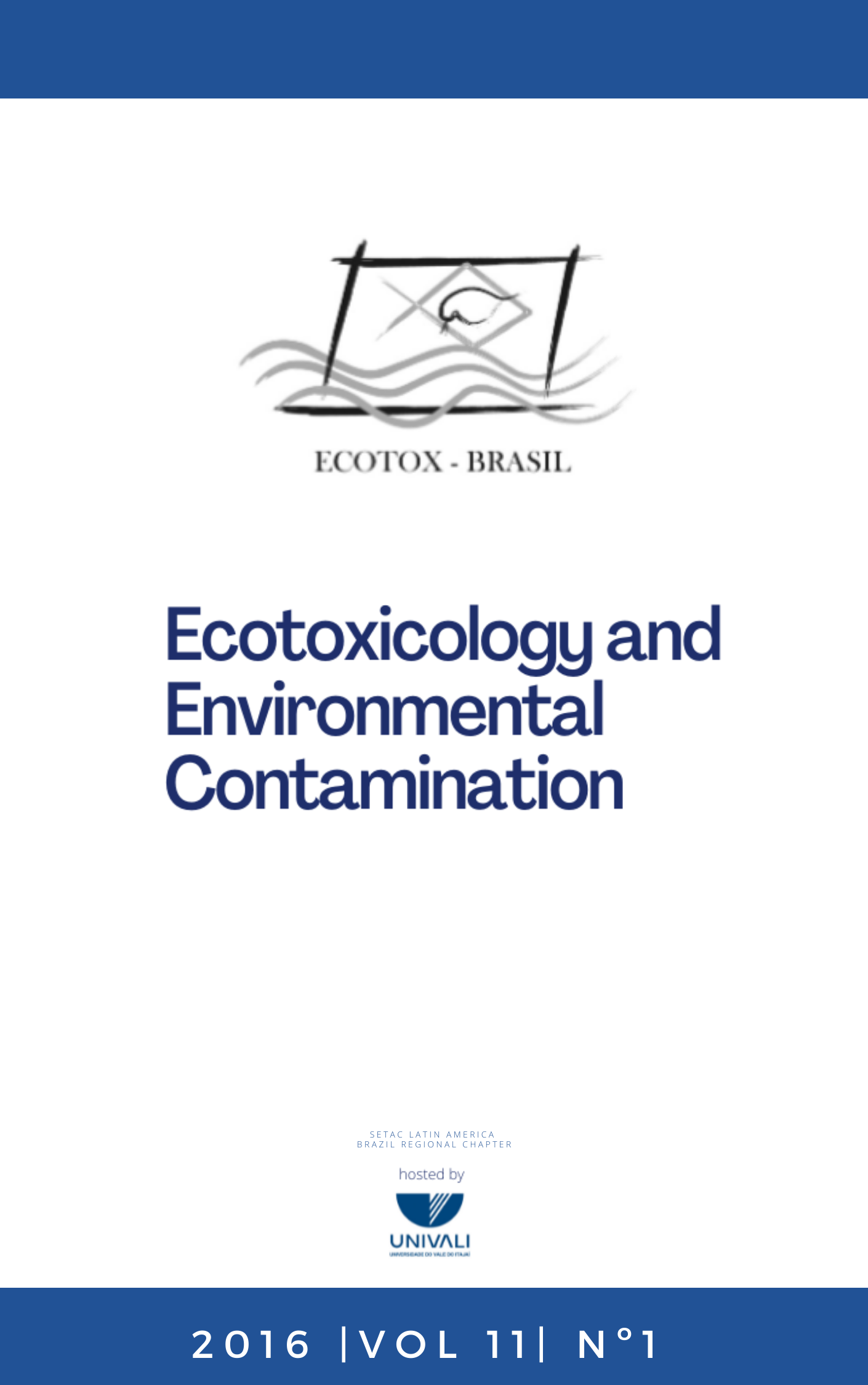Morpho-histochemistry analysis of freshwater planarians Girardia tigrina (Girard, 1850) exposed to sublethal concentrations of Malathion insecticide
DOI:
https://doi.org/10.5132/eec.2016.01.06Abstract
Due to planarian regeneration capacity, researchers have made efforts in studying its gene regulation, cell and tissue responses. Despite such advances, many aspects of planarian biology and histology, especially for Girardia tigrina species, remain unknown. Thus, in this study, we aimed at analyzing the potencial of G. tigrina as a biological model for ecotoxicological research by firstly characterizing the morphology and histology of healthy individuals and then evaluating the sublethal effects of Malathion, a widely used insecticide in Brazil. We exposed individuals of G. tigrina to two sublethal concentrations of Malathion (0.08 mg L-1 and 0.8 mg L-1) insecticide for 96h, sectioned them, and then exposed the regenerating portions for another 72h. We submitted all material to scanning electron microscopy and to different histological/histochemical light microscopy techniques. Several changes in the treatment groups were present when compared to the control group. In external morphology, the following alterations were noteworthy: malformation and underdevelopment of the blastemas, pores dilation in the epidermis and loss of ventral cilia. Our main results regarding histology, histochemistry and cytochemistry were the disruption of several tissues, characterized by cytoplasmic changes, such as vacuolation, histochemical and nuclear changes, including chromatin marginalization. Thus, we concluded that Malathion, mainly in the lowest concentration tested, has acted on reproductive strategies of the tested organism, in addition to promoting necrosis in different tissues.
Downloads
Downloads
Published
How to Cite
Issue
Section
License
Copyright © 2006 ECOTOX-Brasil
Copyright notice: It is a condition for publication that manuscripts submitted to this journal have not yet been published and will not be simultaneously submitted or published elsewhere. By submitting a manuscript, the authors agree that copyright for their article is transferred to the Sociedade Brasileira de Ecotoxicologia (ECOTOX-Brasil) if and when the article is accepted for publication. The copyright covers the exclusive rights to reproduce and distribute articles, including reprints, photographic reproductions or any other reproduction of a similar nature, including translations. No part of this publication may be reproduced, stored in a retrieval system or transmitted in any form or by any means, electronic, mechanical, photocopying, recording or otherwise, without permission of the publisher.
Notice: While every effort is made by the EEC, editors and editorial board to see that no inaccurate or misleading data, opinions or statements appear in this journal, they wish to make it clear that the contents of the articles and advertisements published herein are the sole responsibility of the contributors or advertisers concerned. Accordingly, the EEC, the editorial board and editors and their respective employees, officers and agents accept no responsibility or liability whatsoever for the consequences of any inaccurate or misleading data, opinion or statement.




